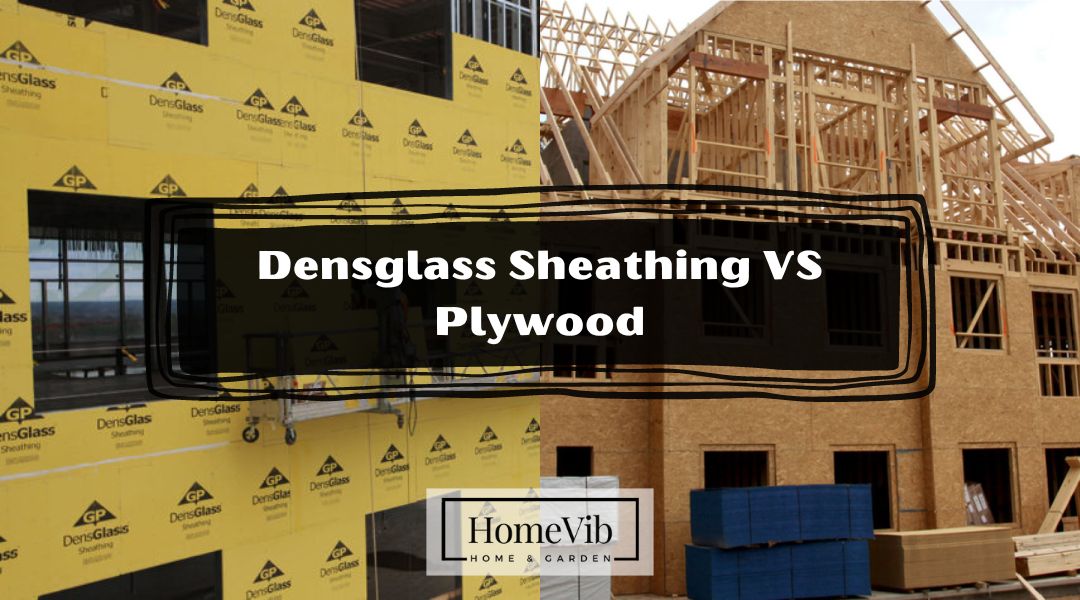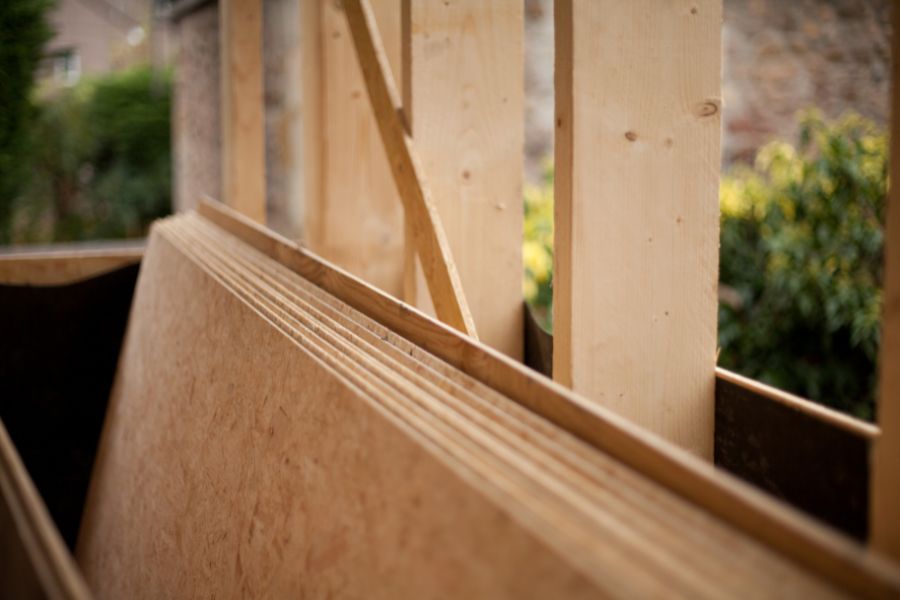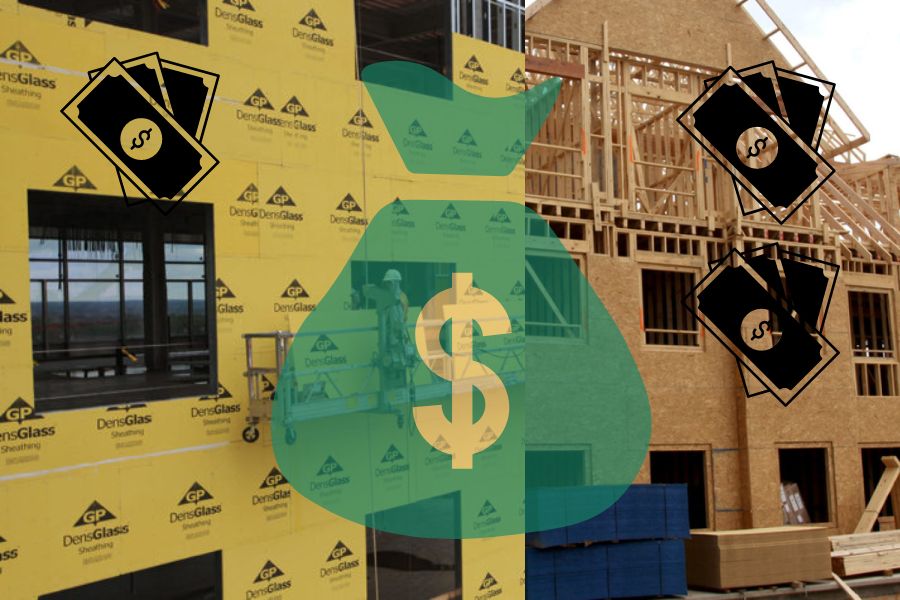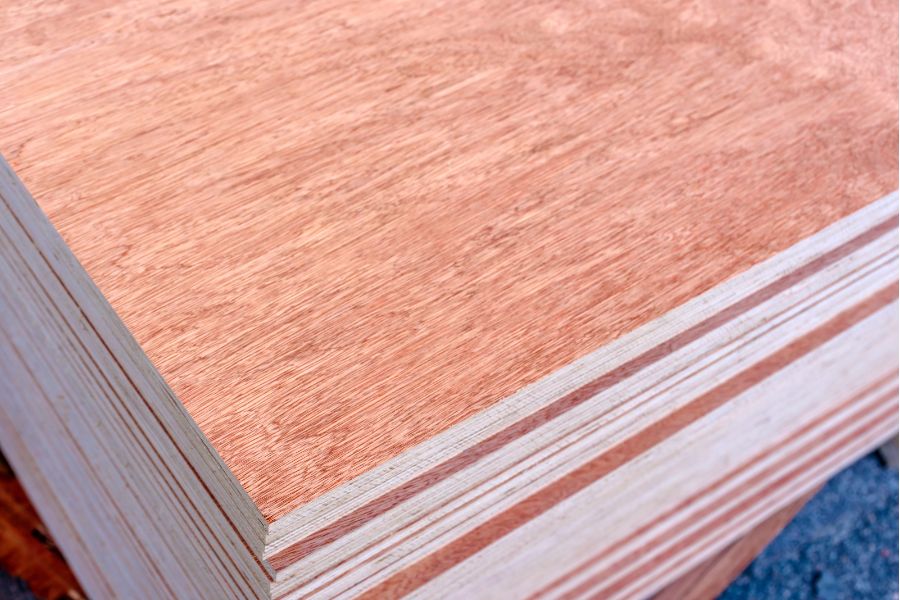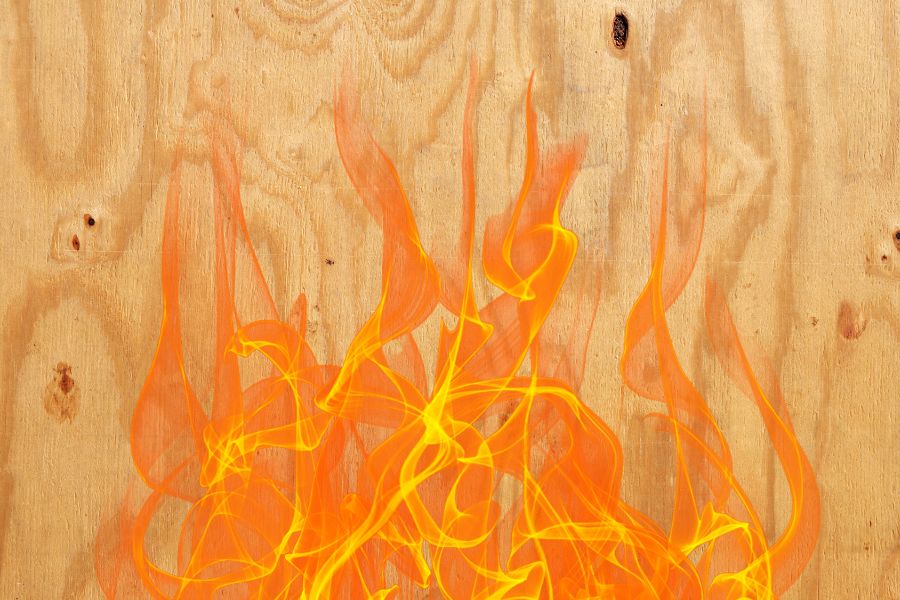When looking at a sheathing material, one usually has to choose. It could be between Densglass and Plywood. There are lots of debates going on. But one thing is for sure. Both materials perform at high levels but in different ways. Both with varying expectations from their users. Therefore, it’s essential to know the facts before making this decision.
There are different advantages and disadvantages to each. And that’s what I will discuss in this post. You can compare price, performance, and other facts through the details below. Let’s begin.
DensGlass Sheathing is a lightweight, strong, and versatile fiberglass mat gypsum sheathing board. Meanwhile, Plywood sheathing is heavy, durable plywood. Both are often used to insulate the walls and floors of long-lasting buildings. However, when it comes to water and fire resistance, Densglass is highly rated. As a bonus, it’s more durable.
What is Densglass Sheathing?
DensGlass Sheathing is a manufactured exterior gypsum sheathing.
It is highly resistant to moisture, fire, and mold. Thanks to the treated gypsum core and integrated fiberglass mats on both sides. It is also an excellent base for many exterior claddings and can withstand the elements for up to a year.
DensGlass Sheathing improves the performance and longevity of both fire-rated and non-fire-rated buildings. Commercial development favors this type of sheathing due to its lower cost.
You can also use Densglass for projects that can bend and stretch without sagging. In this way, the sheathings prevent mildew and rot from forming. Professionals use DensGlass Sheathings to make a solid, airtight, and watertight substrate barrier.
Sheathings perform admirably when installed behind bricks, sidings, and external insulation. It executes finishing systems, stucco, or any other permanent fixture.
In addition, DensGlass sheathings make it possible to keep working through bad weather. In most cases, these are beneficial to complete the project by the deadline.
What is Plywood Sheathing?
Plywood sheathing is the material that covers the underside of a roof’s framework.
It’s cheap and durable, but its lack of a finish makes it inappropriate for public areas. It needs to have other materials placed over it. It is the way to go when building a frame, beams, floor, or bracing panels.
In its structural strength application, it is thin and strong. Whereas in its thermal regulation application, it is thick and soft.
In addition, Plywood sheathing is sturdy and long-lasting. However, it can become weak in certain areas and compromise the building’s integrity.
It is typically utilized for flooring and beams rather than walls. This is because of its longevity and capacity to insulate load-bearing surfaces better.
What Are The Differences Between Densglass Sheathing And Plywood Sheathing?
The sheathing is a protective covering or casing used on floor, wall, and roof assemblies. These are common in both commercial and residential construction.
The wood sheathing is one of the most popular choices for exterior wall sheathing. However, there are many other options. Plywood, OSB, and densglass are all examples of sheathing materials.
Here we will identify the differences between Densglass and Plywood Sheathing.
-
Composition
DensGlass Sheathing is a type of gypsum panel. It consists of a water-resistant core and a fiberglass mat surface. And a gold primer coating.
Gypsum-based material has a paper surface on the long edges, face, and back. And a noncombustible core made mostly of gypsum. Drywall, wallboard, and plasterboard are all names for them.
In contrast, plywood is hardwood veneers. It is the first composite wood product using moisture-resistant adhesives and heat.
Lumber, veneer, particleboard, or medium-density fiberboard are typically used for the core. Meanwhile, the face and back layers are responsible for providing structural integrity.
Plywood, a polymer wood composite, has been around for quite some time. Currently, small enterprises continue to use it.
-
Strength
DensGlass Sheathing is the leading fiberglass mat gypsum sheathing. Most architects request it because of its high resistance to moisture and mildew.
Because of its superior composition and weather resistance, it will serve a long way. Using a heat-treated composite material is more durable and less prone to damage.
However, structural plywood has innate strength and stiffness. Therefore, impacts, racking, or shape deformations do not easily damage them. In addition, wood structural panels have excellent split resistance.
Plywood has a tensile strength of 27.6 to 34.5 Mpa. Wood structural panels are frequently used in expensive metals and concrete. This is because of their inherent rigidity.
-
Cost
In some cases, $52.50 is the going rate for a piece of Densglass gold wall sheathing. It’s significantly more long-lasting and resilient without sealing or painting.
Meanwhile, Plywood comes in a wide range of quality and thickness options. It comes from substantial planks to paper-thin sheets. A plywood sheet can cost as little as $12 and as much as $55, with thicker plywood costing as much as $120.
As you can see, Densglass sheathing is much cheaper than plywood. This expenditure has a very long replacement interval. Additionally, unlike plywood, it doesn’t necessitate regular upkeep.
Therefore, the price per square foot of DensGlass sheathing is lower than that of plywood.
-
Applications
DensGlass Sheathing is a great choice for outdoor ceilings. You can also use it in soffits in both cold and warm climates. This is because of its durability and resistance to moisture. So a lot of humidity won’t be able to cause it to sag.
As you can see, it is highly weatherproof. However, it should not merge with the water. Therefore, it’s essential to divert water from the roof and floors away from the sheathing.
Meanwhile, Plywood has many potential structural uses. These include a divider, floor, ceiling, or wall material. For aesthetic purposes, you can install it outside as cladding and doors. Then on the interior as cupboards, shelves, and furniture.
-
Weight
The standard weight of an 8 ft. DensGlass Sheathing is available in 80 lb.
Every fensGlass Sheathing is lightweight and straightforward to work with. You can cut and attach with standard drywall tools and hardware. This product is far more manageable when compared to cement board sheathing.
On the other hand, Engineered Wood Association (APWA) uses
structural engineering calculations to predict wood loads.
For reference, 48 pounds is the weight of a 4′ × 8′ sheet of 1/2-inch APA Standard Plywood.
Overall, densglass is significantly heavier and denser than plywood. So, working with plywood is a lot more complicated.
-
Fire Resistance
According to the standards in ASTM E136, DensGlass Sheathing is not flammable.
DensGlass Sheathing is a fiberglass mat with a gypsum core with an A1 Fire Rating. It keeps working even when subjected to temperatures as high as 750 degrees. Remember that this type’s main application is fireproof cladding for building exteriors.
Meanwhile, plywood is flammable. Plywood’s thermal decomposition and ignition temperature are at 230°.
However, there are treatments like fire-rated plywood that stop flames from spreading. This treated wood will burn but not oxidize, which slows down and spreads fires in buildings.
-
Environmental Impact
A high-quality Densglass sheathing is entirely free from organic resources. It is also free of synthetic additives that could harm the natural ecosystem.
As a result, Densglass sheathing is often the most environmentally-friendly solution.
However, plywoods are also a renewable resource. The consumption of plywood poses no threat to nature. It’s safe because it doesn’t produce harmful byproducts and has a long lifespan.
In terms of the disposal technique, you can recycle plywood. Some curbside recycling centers will take it. And if yours doesn’t, you can always take the unwanted wood to a wood recycling company.
Neither one has any adverse effects on the natural world.
-
Installation
The lack of flexibility is the main drawback of densglass. Homeowners prevent it as an option because of its curved installation. When compared to plywood, its inflexibility is one major disadvantage.
It also means the sheathing is not flexible. Therefore it would break instead of bending to absorb force from a strike.
Installation expenses for densglass sheathing average $2 per square foot. It could be about $1,000 for a 500-square-foot area. The price tag includes $750 in labor costs and $300 in material costs.
However, the lightweight construction material plywood makes for a simple installation process. It doesn’t expand or contract as much as other materials. And it also maintains dimensions quite well.
Considering that a 4′ x 8′ sheet of construction plywood costs around $10. The total cost to install 500 square feet is $650 ($490 for labor and $160 for materials).
In general, installing in plywood is a breeze. Putting it in place requires no more than two people. Contrarily, densglass involves a team of expert installation.
Which One Is Better?
Every outer structure needs sheathing. Sheathing is the best material for the job. It will also add strength and stability or improve the home’s energy efficiency.
Both of these products have their own peculiar sets of features. Nevertheless, both will be helpful to homeowners, builders, and carpenters.
If you want to save money with an optimal product, consider DensGlass. If you have a rustic or cabin home, then the natural plywood wood look will go very well with your home.
Yet, if you’re looking for an easy installation and a product you can recycle, go for plywood sheathing. At the same time, if you want safety in your home, densglass is fire resistance on your list. It is also beneficial in terms of cost and outdoor applications.
As you can see, there is no clear winner. Both of the materials have their strengths and weaknesses. These will allow you to consider before making a choice. Ultimately, the winner is whichever material best fits your needs and situation.
Remember that adding sheathing to your home’s walls can strengthen and protect them. And depending on the type of fiberboard, it always provides insulation benefits.

